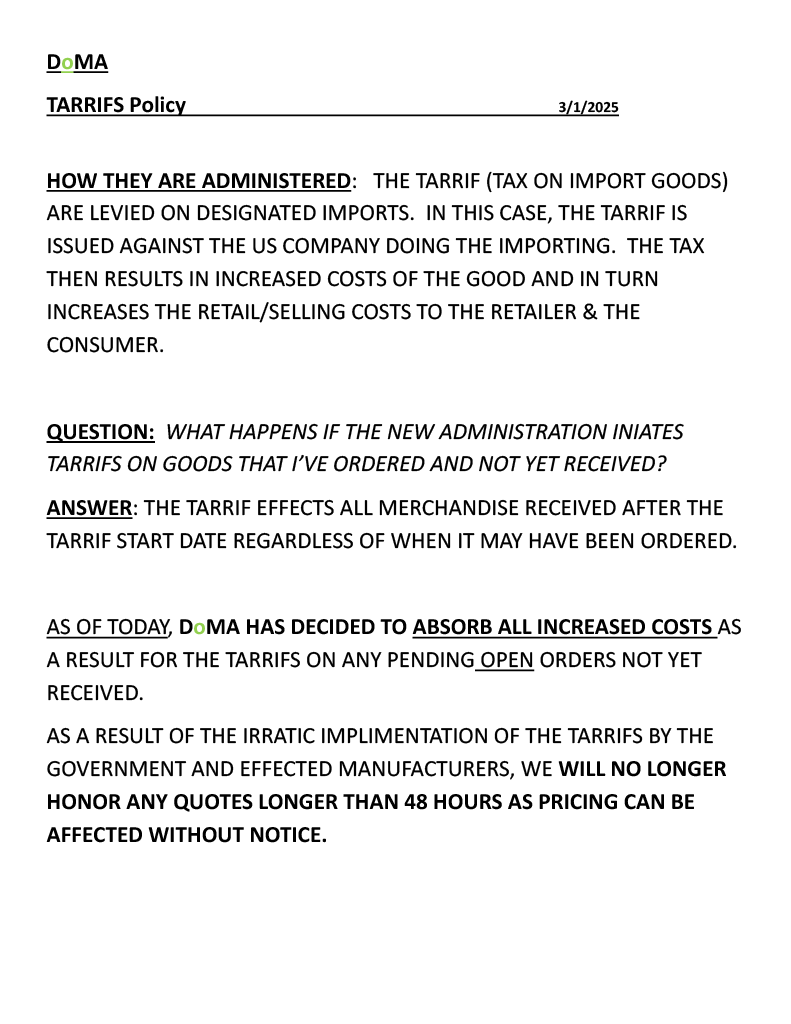
Disclaimer: The stats in this blog post were taken before April 2nd. Numbers could be different after the announcement from Tuesday, April 2nd, 2025. The latest White House furniture tariff update is from September 25, 2025.
The recent tariffs imposed by the new administration have sent ripples through the furniture industry, impacting manufacturers, retailers, and ultimately, you—the end consumer. With increased import duties on materials and finished furniture goods, prices are rising, choices may become limited, and the way we shop for furniture could shift dramatically.
Why Are Furniture Prices Increasing?
The tariffs primarily target imports from China, Mexico, and Canada—three major sources of furniture and raw materials. Many U.S. furniture companies rely on international supply chains for wood, metal, textiles, and even fully assembled pieces. The new tariffs impose:
- A 25% tariff on furniture and materials from Canada & Mexico
- A 10% tariff on Chinese furniture imports
These added costs don’t just affect businesses—they get passed down to consumers. The National Retail Federation estimates that these tariffs could cost American consumers an additional $8.5 billion to $13.1 billion annually on furniture alone.
What Does This Mean for Furniture Shoppers?
If you’re in the market for a new sofa, dining set, or bedroom suite, here’s what you should expect:
Higher Prices – The most immediate impact will be an increase in price tags across major furniture retailers. Companies will either absorb the increased costs (cutting into their margins) or pass them on to customers.
Longer Lead Times – With suppliers reconsidering their manufacturing locations, shipping delays may become more frequent, leading to longer wait times for orders.
Fewer Discount Deals – Sales, promotions, and clearance deals may be less frequent, as retailers struggle to maintain profits under higher import costs.
More American-Made Options – The tariffs aim to encourage domestic manufacturing, which could mean more U.S.-made furniture on the market. However, these products may still come at a premium due to increased material costs.
A Shift in Materials & Design – To cut costs, some furniture brands might start using alternative materials or adjusting designs. Expect more engineered wood and mixed-material designs in place of solid wood and premium metals.
How Can Consumers Adapt?
If you’re shopping for furniture in 2025, here are some strategies to navigate these changes:
– Buy Sooner Rather Than Later – Prices will continue rising as tariffs remain in place, so locking in purchases now may save you money.
– Shop Local – Smaller retailers might be more flexible with pricing and offer unique selections compared to big-box chains that rely on large-scale imports.
– That’s just to name a few options when considering buying new pieces of furniture.
Final Thoughts
While these tariffs aim to strengthen domestic industries, they are already causing short-term (possibly as well long term) price hikes and supply chain disruptions. Whether you’re a first-time homebuyer furnishing your space or simply upgrading your decor, it’s important to stay informed about these changes and adjust your shopping strategy accordingly.
At the end of the day, the furniture market will adapt—but in the meantime, expect to pay more for your next couch or dining table.
Below we have attached out store policy so you can plan accordingly:











